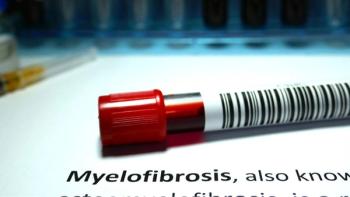
It’s Best to ‘Be a Pest’ When Self-Advocating
Being a self-advocate also means self-care.
“Be a pest. Do it.” Those words from a friend are written on a piece of paper that I keep rediscovering in my mess of a home office. The advice was intended for job hunting, but I’ve found that it applies to self-advocacy for medical care as well.
For example, while in treatment the first time, I ran across a series of charges that didn’t make sense. When I called my insurance company and challenged this, they found that the cancer center was electronically sending charges in a batch that started transmitting before midnight and finished after midnight.
The result was that my activity appeared on two different dates, triggering the system to incorrectly bill me as though I had seen the doctor on both days. So, with one phone call, a pleasant attitude and a bit of patience, the financial burden of cancer treatment was lowered since the insurance customer service person removed the extra charges while I was on the phone.
When I dealt with cancer the second time, patient portals had become a thing. With a portal, I got to see test results and visit summaries for the first time.
When I sat with the pre-op counselor before the surgery to remove the cancer, I asked if the hospital would post the pathology results on my portal. The counselor didn’t know, but she doubted it.
“It’s my data,” I told her. “I want to see the pathology of my own cancer.” I was so insistent that she gave me the proper paper form that would make sure I got the report by mail. The hospital eventually posted the pathology results to my portal, but I felt much better knowing that I would get answers sooner than at the next visit with my doctor.
Part of being a patient, it seems, sometimes means asking questions about how processes work. It can be hard to know the right questions to ask, but people are generally patient and kind as I fumble along. Here is where it can really pay off to “be a pest.”
For example, I had a mystery mass. A CT scan inspired my oncologist to order a biopsy. The breast center I chose told me to wait for them to call me to schedule the biopsy. Waiting to schedule a biopsy, of course, can be a special torment because you don’t know if you have a serious problem or not and you won’t get answers until the biopsy is over and the lab results are back.
A week later, I realized they hadn’t called to schedule anything. It was time to become a pest.
I called the breast center. Here’s the conversation in short form:
Me: Why haven’t we scheduled the biopsy yet?
Scheduler: We can’t. We need copies of your imaging first so the radiologist can make a plan. We must have the plan before we can schedule.
Me: Which images?
Scheduler: Mammogram and CT scan.
Me: When did you request them?
Scheduler: Monday. It’s odd. We should have had them by now.
Me: Today is Friday. Can I request them?
Scheduler: Yes! It might help things move along if you do.
Me: Thanks!
I started with the mammogram. The imaging place couldn’t find the request from the breast center, but they guided me through my patient portal to the request form. Within a couple of hours, the breast center had the images. Boom!
The CT imaging place also couldn’t find the breast center’s request. They also set the electronic delivery of images into motion when I told them the delay was holding up the scheduling of a biopsy. Going one step further, they let me know that I could pick up a physical CD of the CT images if the electronic transmission didn’t happen soon enough. That way I could be sure the breast center got the images that day. I felt reassured to have another option. Happily, the images were transmitted electronically later that day.
It felt so empowering to (1) have a means of discovering the reasons for inaction, and then (2) do something about it.
The person I was 20 years ago would have fretted while I waited for the breast center to call me to schedule, but I probably wouldn’t have proactively contacted them. These days, I see that it’s okay to check on things that don’t seem right. It’s okay to ask questions until I understand the answers.
I have noticed that most people willingly cooperate however they can, so long as I’m not belligerent. I also use things like Sudoku puzzles to distract myself during long periods of music on hold, because music on hold is a special type of torment…
So be a pest. Do it.
When it’s your body, your data, your health, then it is absolutely your right to self-advocate.
Practicing self-advocacy is not being a pest. Not really.
Instead, self-advocacy is just taking care of yourself. Self-advocacy is healthy for your state of mind just like a nutritious diet is healthy for your body.
So, give yourself permission to be a “pest” as often as needed. Do it.
For more news on cancer updates, research and education, don’t forget to




